Big Trip 2024 Western Australia Road trip 1
- Anne B 10milesfrom

- Feb 20, 2024
- 12 min read

A very early start for the potentially very slow drive to Bali airport gave us the opportunity, at dawn, to watch the local fishermen pulling in their nets. It felt timeless!

The airport drive went without a hitch, and so we managed to get switched to an earlier flight! Where to? Just down a bit to Perth in Australia! We only have 9 days here, so a whistle-stop road trip is in order to see places we didn't visit last time! We picked up our little hire car, bought a cheap cool bag, ice block and some provisions, and headed east to a town called York, in the Shire of York, on the River Avon! This was Western Australia's first inland town, established in 1831 with the purpose of growing crops and vegetables to supply Perth. It contains some pretty colonial buildings, and is the start of the vast wheatbelt, and the old goldfields area.
We had had hot weather in Asia, but it was 37°C here, and they were desperate for rain. The day before had been 43°C. Our air bnb was at the Lookout, run by a very friendly couple whose origins are the UK. It felt like a very English house due to their extensive collections of glass, china and curios, including much Royal memorabilia. A great sunset view from the lookout on the hill behind them, and a super breakfast make this an excellent stopover. Dining choices were limited in town, but Monday night was Roast night at Bellissimo, and we had excellent Roast pork - the only option on the menu! But we are back in the land of the Creme egg!!
An early start next day to visit the community Motor Museum which was set up by a private collector, Peter Briggs. There is a good collection of cars and bikes from across the eras, including a motobike built to be dropped by parachute in WW2, and the truck used in Crocodile Dundee, autographed by Paul Hogan. They even had Chris' old BSA Bantam motorbike. Well maybe not the exact one!
Next we hit the road for the 3.5 hour drive to Hyden. We hardly saw another car on the road. Luckily, we have air-conditioning as it is 36°C outside! This is truly pioneer country. Farms are many, many miles apart, with no villages or towns. Early settlers farmed sheep and then wheat. One man brought in 24 rabbits in Victoria in 1859 ... and released them for hunting. Just 13 years later they had reached plague numbers, and spread 1300 miles. To stop them reaching Western Australia, they built the Rabbit Proof fence. In fact there were 3, built between 1901 and 1907. A total of 2,023 miles, with rabbit traps every 5 miles. They also patrolled the fence, and for 30 years it was quite successful. Today, the remains are use to keep out emus and wild dogs. Here is a sample portion.

Hyden's claim to fame is the incredible geological formation called Wave Rock. I have always wanted to see it, and was worried it would be an anticlimax, but it definitely wasn't. 270 million years old, 115 metres long and 15 metres high! We were lucky to have it all to ourselves, and then did the walk up on top.

This is a pretty remote spot on the edge of the wheat belt, but the fields are parched from lack of rain and extreme heat. The lakes are all dry, and many are now salt pans. We noticed how few birds and animals were around due to the heat and lack of insects, so it was good to see some lizards up on top of Wave rock.
Close by are some huge, curiously shaped rocks, one of which is called Hippos yawn!

A few miles away are some rocky outcrops known as the Humps. Underneath is a cave, known by traditional people as Mulka's cave, due to the aboriginal stories. The cave was a historic meeting place for the local people, and contains one of the best collections of aboriginal hand prints in Western Australia. 450 have been identified here in different sizes and colours. It was impressive to see but hard to photograph! Look closely!
A walk to the salt lake ended our day, and we stayed the night in a cabin on the Wave rock campsite, which was more comfortable than I was expecting. We had our first aussie pie for supper! Chris has been looking forward to this since our last road trip here in 2012!
Early next morning we set off for the 4 1/4 hour drive to Esperance on the coast. For the first 2 hours we only saw about 10 cars! We then joined Route 1 which was a bit busier, but still only a 2 lane road which meant I had to overtake the 3 and 4 trailer long road trains! We then drove beyond Esperance to Cape Le Grand National Park. It has 2 very contrasting claims to fame. The first is an accurate reconstruction, in solid granite, of Stonehenge as it would be if it was complete! Started by an enthusiast, he ran out of money after having the full size granite stones quarried and cut. Luckily, a local farmer took on the project! Construction and size are accurate, right down to the sun rising through the key stones on summer and winter solstice! Quite surreal! The second is considerably more beautiful, and that is the coastal beaches looking out towards Antarctica!
Lucky Bay has been voted most beautiful beach in the world, and we could see why. Beautiful white sand and astonishingly blue seas, plus rolling waves was certainly beach perfection in our eyes. The camera could not do it justice. There is usually a group of Kangaroos that live on the beach, although they are usually asleep at the time of day we were there, but they were nowhere to be seen, and we were told that the extreme heat has driven them into the Bush to seek shade. Climate change is having a huge impact on everything out here.
The next beach is called Thistle cove and was, in our opinion, even more gorgeous.Close by is Whistling rock, a huge monolith with a slit in it, that whistles, but only when you stand in a certain position!
We had a fantastic walk here and then headed back to Esperance, via the Lucky Bay Brewery where Chris found his favourite ale of the trip so far! They also had some slightly cheekier brews on offer! The supermarket had some heart stopping offerings too! We like the teeth on Grandpa's mix!
Next, off to find our Air BnB, an absolutely delightful house at Brandy Creek. Our charming host, Tanya, had helped me book a restaurant for Valentine's day dinner, and when we arrived at her house, the bed was sprinkled with rose petals, and we had chocolates and roses too! The garden was lovely and full of birds.
Esperance is a pretty port town, with what looked like an interesting museum which sadly was closed! It has an impressive whale tail sculpture which reflects its previous history as a whaling port. It's shores look south towards Antarctica, and in winter, many storms arrive from this direction, bringing cold, wet weather. Hard to imagine during the 37°C temperatures today! We had a very good 'V'day' dinner at Taylor St Quarters restaurant, named because the building was once the Nurses quarters for the hospital!
After a comfy night's sleep, we explored the Great Ocean trail west of Esperance, which leads to a string of evermore beautiful white sand beaches with names like Blossoms beach, nine mile beach and eleven mile beach.

If you were fed up with temple pictures in Asia, it will be beach pics here! The sand is powered granite, and squeaks like snow when you walk on it. The sea was about 18 or 19°C. And there were rockpools!!
Next past a lake that used to be bright pink due the presence of bacteria that secrete carotinoids. There is still a pink lake in the area, called Hillier Lake. The best way to see it is by rather expensive helicopter, so we skipped that, but here is a 'borrowed' photo.

Next we headed back along Route 1 for another 4 1/2 hour drive to Bremer Bay. Halfway is a town called Ravensburgh. There is a tour in Western Australia called the Art Silo trail. An artist has painted some of the huge grain silos across the wheatfields area of the state. In Ravensburgh the design is a delicate one depicting stages of development of a Banksia flower. It took 31 days to do and used 450 lites of paint.

Some are much more dramatic, as these prints show! (The prints were in the loo at our air bnb, along with this practical and philosophical sign!).
To pass the time on the drive, we found a test match on the radio, between Australia and South Africa being played at the Waca in Perth. It was women's cricket, and was quite riveting.
Bremer Bay is a rather off the beaten track, pretty settlement famous for its whale watching trips. We had already decided we didn't fancy an 8 hour trip on the open Ocean, and contented ourselves with some walks to yet more stunning beaches! Sorry!

We sat for ages watching the waves rolling in on one beach, and the next one was so calm!
Our air bnb was simple but lovely, and in the evening we popped out to... guess where? The local brewery for dinner. A good meal, with a nice beer...and the cricket was on the TV so we could continue following the game!
This area was heavily farmed for sheep, and local records state that in 1882, 10.000 sheep were sheared...by hand. Dingoes were a huge problem, and people were paid for each one thay could kill.
Next day we had another long drive through a mixture of scrub, heathland and forest, but with a sad reminder of climate change. Vast areas have been destroyed by forest fires, and, tragically, most of them are caused by people, sometimes deliberately, or by a discarded glass bottle or cigarette. It is sad to see these huge blackened areas, but underneath, there are so many signs of hope and regeneration. These Banksias have naturally adapted to release their seeds when affected by fire, which are all starting to germinate beneath.
We made one stop at Cape Rich, a beautiful isolated beach, 20 minutes along a gravel track from the road. We walked along the beach and over beautiful red rocks, and watched Crested Terns and Sooty Oystercatcher! We also saw kangaroo, hiding in the shade! It is places like this where you feel the size and remoteness of Australia, and wonder what life was like for early settlers.
Our destination was Albany, an historic port and attractive town popular as a getaway for Perth residents. It has a two huge natural harbours, and was once considered for the capital of Western Australia, but the honour went to Perth. We stayed with Robin and Gary for 2 nights, in their very comfortable air bnb at lovely Emu Point. It was so well equipped, had lots of extras and treats, and was a good base for exploring the town.... and looking at the birds on the lawn! (A Rosella and a silver gull!)
This area had been visited and mapped by British, Dutch and French explorers in the 17th and 18th century, but European settlement of Western Australia began at what is now Albany on Christmas Day in 1826 when the Brig Amity arrived. This is a replica, now a museum.

On board were 23 convicts, 21 soldiers, a surgeon, a storekeeper, animals, and six months worth of stores. Relations between the first Europeans and the native Mineng Noongar peoples were reasonably good. Over the years, Albany has had an important role as a whaling port, a coal depot servicing the steam ships on their way to Sydney, and as a departure point for ships heading to Europe in WW1 and WW2. In WW2 it was also a naval and submarine base, used by the US Navy. The hill in the centre of town is devoted to these military campaigns, with a memorial on the top, and a remembrance walkway.
Princess Royal fort was built here in 1893, and today the Anzac museum is here, telling the stories of some of the 41,000 Anzac soldiers who left here in 2 convoys in 1914 to join WW1, along with 11,000 horses.

Many never returned as they were involved in bloody campaigns like Gallipoli, and the Somme battles. Also on the hill are gun emplacemants, lookouts and poignant memorials to different military divisions.
Today, Albany is a thriving port and tourist destination with a population of almost 34,000. To the west of the town is Torndirrup National Park, with dramatic scenery. At the Gap you can walk out onto an overhanging viewing platform and watch, and listen to waves thundering in below you.
Nearby, the natural bridge looks as if it should collapse at any moment. A phone, and a very smart shoe far below us made you wonder how they came to be dropped! A lovely walk takes you to the Blowholes. Very strong waves crashing into the rocks below send spray up through the blowhole. They weren't quite strong enough today, but the force of air coming up as the waves crashes in was enough to blow hats and sunglasses off!
We had a picnic here, and were watched by an Australian raven, whose feathers are very dark purple, notblack, and a very industrious ant, who was determined to get this crisp back to its nest! Then at Frenchmans bay is the old whaling station, the last one operating in the Southern hemisphere when it closed in 1978.
Supper was at the award winning fish and chip shop/restaurant, and Chris found his favourite beer so far!
Next morning we had also booked a wildlife and history boat trip with Captain Jack on the Kalgan Queen! Captain Jack was about 30 years younger than we expected.. he took over the trips from his father, 16 years ago. He was full of historical information, facts and figures, and some pretty awful jokes! We learned so many things, including the fact that in adverse conditions, kangaroos can pause their pregnancy for up to 6 months. Also, these trees are Norfolk pines and you often see them around ports. They grow tall and straight, and Captain Cook recommended they were planted so that if a ship came ashore with a damaged mast, there would be a suitable tree trunk available as a replacement. He later realised the wood was too soft to last long, but as a temporary fix it was helpful! We travelled through the harbour and up the Kalgan River to the point where the first explorers mapped it, and were stopped by native stone fish traps.
We were treated to the incredible sight of Ospreys and Sea Eagles fishing around us.
Also Pelicans, including an apparently rare sight of Pelican chicks.
One Pelican, Perch, had been hand reared due to an accident, and although back living in the wild, has a soft spot for Captain Jack and kept landing on the boat!

In the next picture, he has a fish in his beak. He kept tossing it until it was head first, as if he swallows it tail first the scales are rough in his throat!

During the trip we sampled local strawberries, and Jack's mums delicious Damper bread. Also Albany rock oysters grown in the harbour in special trays designed to be flipped over by the tidal current, ensuring the oysters have some time out of the water, which they need to grow. Normally they would just be grown in shallow water, but this harbour has a globally significant amount of sea grass, and the trays would damage it, so the oyster farms must be in deep water.
I even found a model railway club having an open day, and to Chris' delight, they knew all about the Somerset and Dorset railway! A lovely walk around Lake Sepping ended our stay here. We liked Albany very much, and felt it was a good base in the area.... and they have bandicoots!
Next day we drove to Augusta, another 4 hour trip. Still very little traffic around. We arrived at lunchtime in this small, sleepy town at the SW tip of Australia.
Cape Leeuwin marks the corner, and the lighthouse has been there since 1895. It is the tallest lighthouse on mainland Australia. This is the point where the Indian Ocean meets the cold Southern Ocean.
Here we did another river trip, seeing many more birds, including 5 sorts of cormorant, more osprey, spoonbill, caspian tern and many more. There was also a little cable car ferry to Molloy Island, which the islanders operate themselves! The highlight of the trip were definitely the dolphins that kept popping up around us.. too fast for good photos!
It was Sunday night, and we headed to the local bar for supper. It was packed, and we shared a table with 3 friendly couples our age who were sheep farmers. One of them told us his son has opened a new restaurant. They are growing all the produce on the farm, and he thinks it has a better future than the sheep!
Our last day on the road saw us heading north to Hamelin Bay on a mission. We had an early start and were rewarded with seeing lots of Kangaroos in the fields. They are gone by about 8.30am because the heat is too much. Hamelin Bay is beautiful, and has some unusual, and sometimes elusive residents.
We were lucky. Two made an appearance. These are stingrays, and they come into the shallows early in the morning.
We watched them swimming around for quite a while before reluctantly leaving this beautiful spot. Our last stop heading north was Lake Clifton, and some very strange lumps! These are not rocks.
They are clumps of living microorganisms called Thrombolites, and are thought to be part of the origins of life on earth. These examples are about 2000 years old, but their origins date back to 570 million years ago, when they produced Oxygen which allowed life to develop on earth. How profound is that?! Water levels and salinity must be carefully managed to keep these alive.
Our road trip has covered 1360 miles through very diverse scenery -the most beautiful, rugged beaches, and remote towns and villages. Summer weather now, but in winter this coast can get lashed with rain and winter storms. Huge respect to the settlers who fought the odds and made a home here, and our sympathies are with those still here who are battling the effects of global warming with ever more extreme weather events. Travel isn't only about the beautiful bits. It increases awareness of the different struggles people face all around the globe, and how they are trying to manage them, and reminds you that your home country isn’t the only one with problems, despite what your press might have you believe!! A last, beautiful picture from Hamelin beach to finish!

Our road trip finished in Fremantle, near Perth, but that is for the next blog!

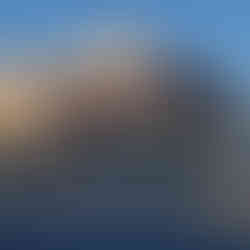




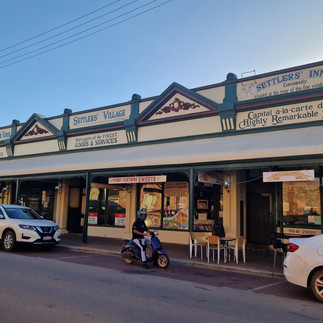





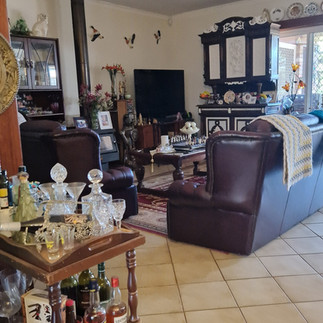





















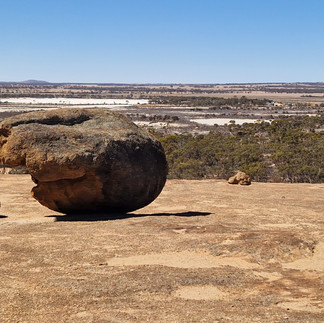





















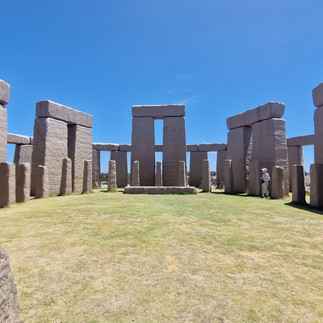
























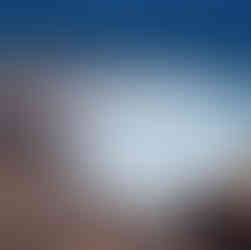















































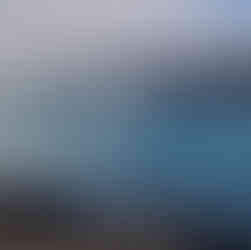



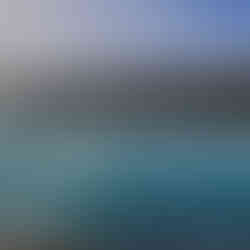






































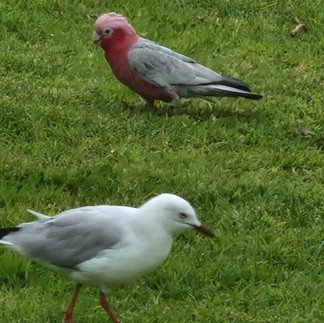




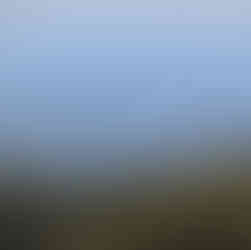



























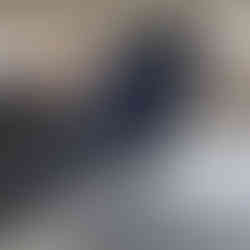




























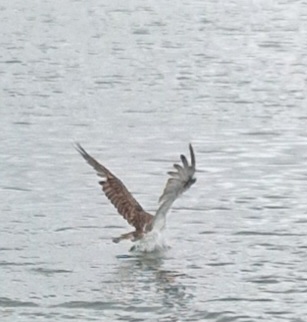




























































Wave rock and Hippos Yawn - awesome! 😍 And could you swim from any of the beaches, or is that a big no?
Western Australia was our favorite besides Tasmania. The white beaches and kangaroos, very peaceful and fun. Wonderful photos. Thank for bringing back great memories!